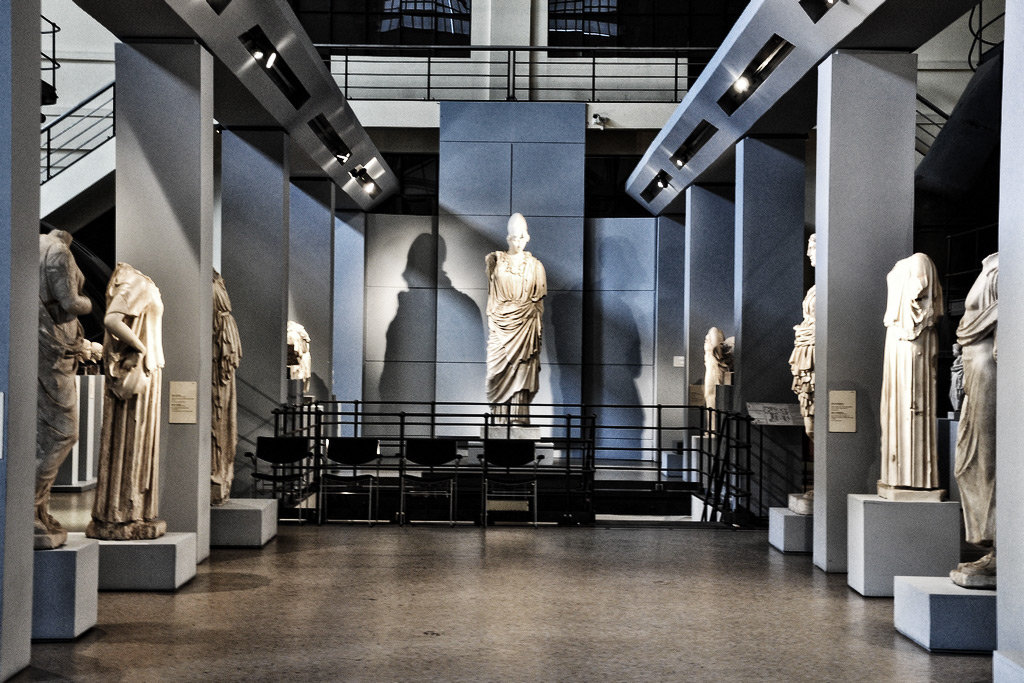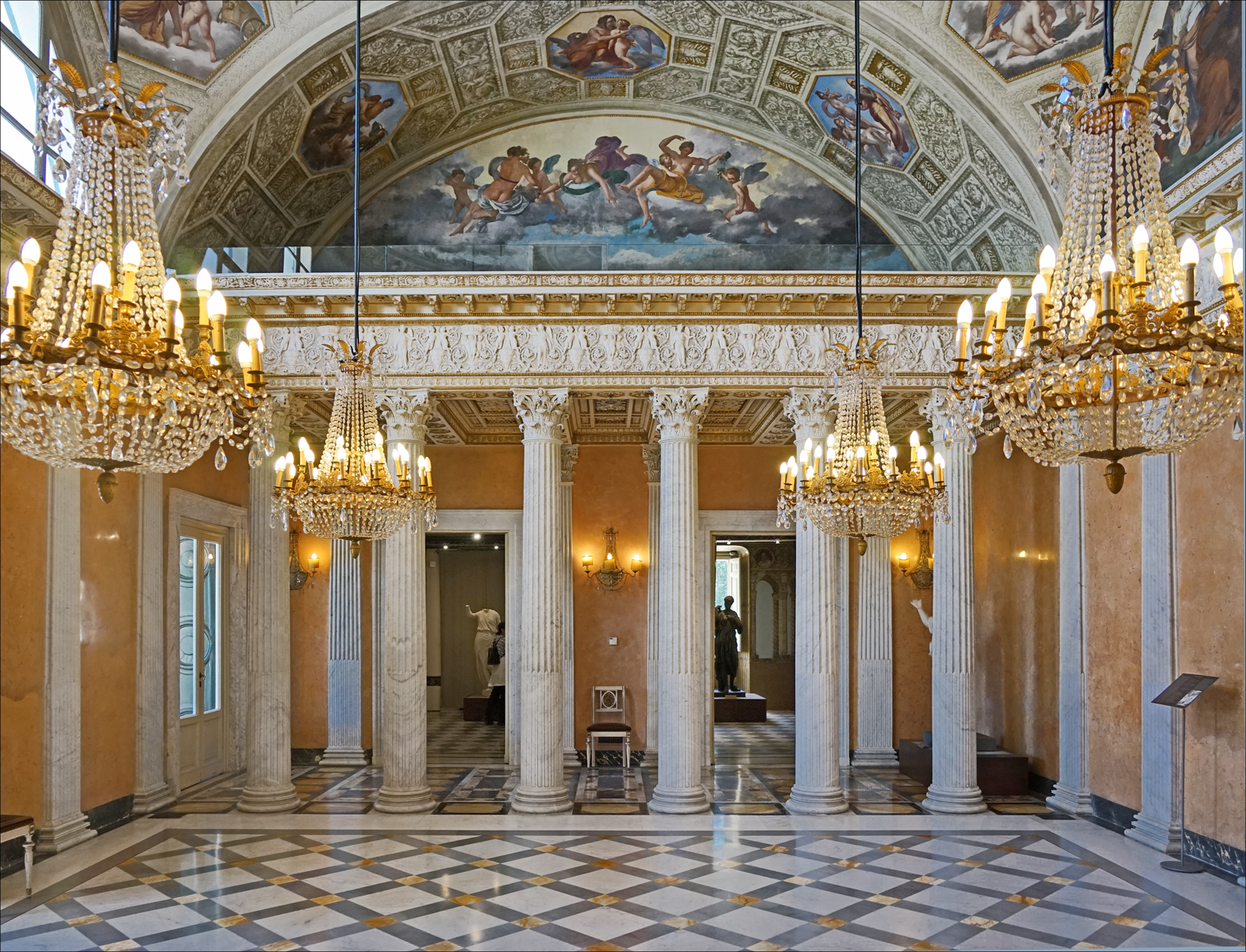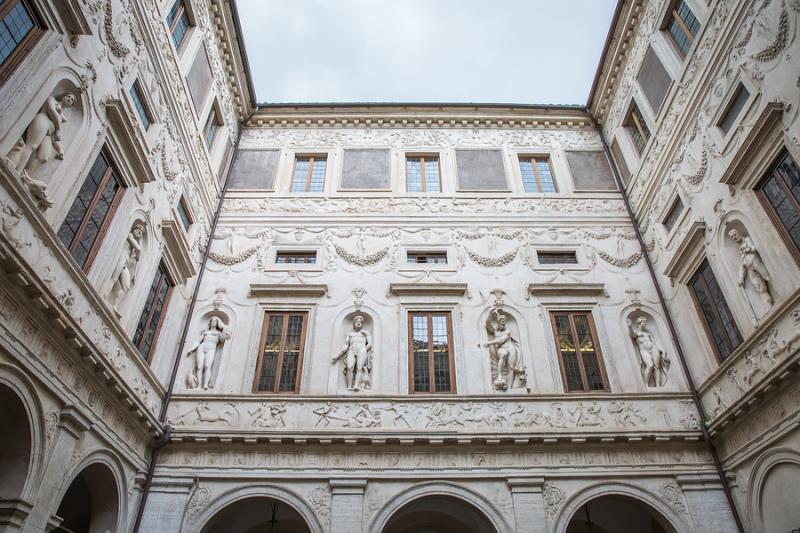We begin a new series aimed at highlighting little-known museums, sites and cultural institutions in Italy’s most popular tourist destinations in an effort to shed light on all those places that are not on everyone’s ‘must-do’ list, but are actually worth discovering and can make one’s visit all the more enriching.
We suggest to always be curious, have an open mind and be willing to go beyond the usual itineraries for a deeper experience and to help alleviate a bit of the burden on the most heavily visited sites.
We start with Rome.
Centrale Montemartini
Industrial archeology meets classic archeology. Centrale Montemartini is one of Rome’s most original museums: it houses about 400 ancient sculptures and floor mosaics inside a former power plant inaugurated in 1912 and inactive since 1963.
Since 1997, Centrale Montemartini has housed part of the huge collection of the Capitoline Museums. Part of the original interior has been preserved: the statues are surrounded by huge dark machinery and low lights. The contrast between antiquity and modernity, art and industry is striking, and it works.
Where: Via Ostiense 106.
Open Tuesday to Sunday, 9 am – 7 pm. Entrance €6,50.

-------------------------------------------
Museo delle Mura Aureliane
The ‘Museum of Aurelian Walls’ is housed inside the Porta San Sebastiano, the largest gate of the Aurelian Walls, located at the beginning of the Appian Way. The Aurelian Walls were built between 271 AD and 275 AD to keep the Barbarians out and enclosed the seven hills of Rome plus the Campus Martius and, on the left bank of the Tiber, the Trastevere district.
The exhibition tells the story of Rome’s walls and their building techniques. In addition, you get to walk along the inside of one of the best preserved stretches of the Aurelian Walls, via a walkway that passes above the walls, behind crenels, and through ramparts.
Combine with a walk on the Appian Way.
Where: Via di Porta San Sebastiano 18.
Open Tuesday-Sunday, 9 am – 2 pm. The museum is free of charge.

--------------------------------------------
Museo di Roma in Trastevere
You’re not going to miss Trastevere when in Rome, are you? So while you’re there, take some time to go inside the Museo di Roma in Trastevere, which houses a permanent exhibition on Roman life from the late 18th to the first half of the 20th centuries. Paintings, prints, drawings and watercolors provide a fascinating insight into a way of life and traditions of Rome that don’t exist anymore, lost after Rome entered the modern era. In fact there’s a series called ‘Roma sparita’ (Vanished Rome) and one dubbed ‘Roman Scenes’, featuring life-size representations of day-to-day life, focusing especially on costume, folk dancing, festivals, and crafts.
Museo di Roma in Trastevere is located in the restored Carmelite convent of Sant'Egidio.
Where: Piazza Sant’Egidio 1/b.
Open Tuesday to Sunday, 10 am to 8 pm. Free.

--------------------------------------------------------------
Galleria Spada
Located inside beautiful Palazzo Spada, built in the 16th century for Cardinal Girolamo Capodiferro, Galleria Spada houses an important collection of Baroque paintings created during the 17th century by artists of the caliber of Artemisia Gentileschi, Guido Reni, Guercino and Parmigianino.
The collection is still displayed in overlapping rows as in a painting collection from the 17th century. Most of the exhibited artwork comes from the private collection of cardinal Bernardino Spada.
At the end of the itinerary on the first floor is the ‘Secret Garden,’ which preserves the most spectacular Baroque artifice of Rome, the Colonnade, or forced perspective gallery, created in 1653 by Francesco Borromini for Cardinal Spada. Diminishing rows of columns and a rising floor create the visual illusion of a gallery almost 40 meters long, when in fact it’s 8 meters long, and of a life-size sculpture at the end of the walkway, which in reality is 60 cm high.
Where: Piazza Capo di Ferro 13.
Open every day except Tuesday, 8:30 am – 7:30 pm. Entrance €5.
Free entry first Sunday of the month.

-----------------------------------------------------------
Casino Nobile - Museums of Villa Torlonia
On the via Nomentana in northern Rome, the neo-classical Villa Torlonia guards, in its lavishly decorated interior, the Torlonia family’s collection of classic sculptures and early 20th-century paintings from the Scuola Romana (Roman School of Art).
One of the highlights is the Ballroom, or dining room. With just one large semicircular window, the light is reflected by the mirrors that line the walls, thus increasing the sources of light and creating the illusion of a larger space.
Fun fact #1: Benito Mussolini lived in the villa from 1925 to 1943, renting it from the Torlonia for one lira a year to use as his state residence.
Fun fact #2: During a state visit in 1931, Gandhi was received in the Ballroom.

The villa, built in the 19th century for the banker Giovanni Torlonia, was abandoned after 1945, falling in a state of disrepair for decades until it was recently restored and opened to the public, part of the ‘Musei in Comune’ network, the museums owned and operated by Rome's municipality.
Where: Via Nomentana 70.
Open Tuesday-Sunday 9 am – 7 pm. Entrance €11.
What little-known museums that impressed you have you discovered in Rome?













